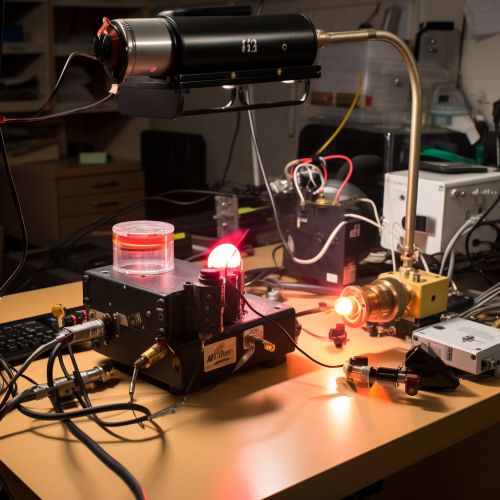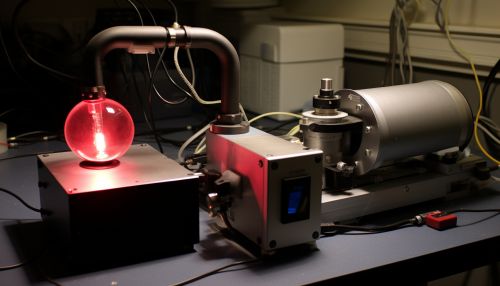Near-Infrared Spectroscopy
Introduction
Near-Infrared Spectroscopy (NIRS) is a spectroscopic method that uses the near-infrared region of the electromagnetic spectrum (from about 700 nm to 2500 nm). Typical applications include medical and physiological diagnostics and research including blood sugar, pulse oximetry, functional neuroimaging, sports medicine, elite sports training, ergonomics, rehabilitation, neonatal research, brain computer interface, urology (bladder contraction), and neurology (neurovascular coupling). There are also applications in other areas as well such as pharmaceutical, food and agrochemical quality control, atmospheric chemistry, and combustion research.


Principles of Operation
Near-Infrared Spectroscopy is based on molecular overtone and combination vibrations. Such transitions are forbidden by the quantum mechanical selection rules. Hence, the molar absorptivity in the near-infrared region is typically quite small. One advantage of NIR spectroscopy is that it is not a destructive technique. The sample remains intact after being measured, which is important in many fields, especially the pharmaceutical industry.
Applications
NIRS is used in many different fields for a variety of applications. Here are a few examples:
Medical and Physiological Diagnostics and Research
In medicine, NIRS is used for several purposes including the measurement of tissue oxygenation. This is important in areas such as neonatal research, where it is vital to understand the oxygen levels in the brain of a newborn. It is also used in sports medicine to monitor the oxygen levels in muscles during exercise.
Pharmaceutical Industry
In the pharmaceutical industry, NIRS is used for quality control and to determine the content of drugs in a sample. This is a non-destructive technique, meaning the sample can be used again after measurement.
Food and Agrochemical Industry
In the food and agrochemical industry, NIRS is used to determine the quality of food products and to measure the content of certain chemicals in a sample. This is important for ensuring the safety and quality of food products.
Advantages and Limitations
Like any other technique, NIRS has its advantages and limitations. One of the main advantages of NIRS is that it is a non-destructive technique. This means that the sample can be used again after measurement, which is important in many fields, especially the pharmaceutical industry. Another advantage is that it can be used to measure a wide range of samples, from solids to liquids and gases.
However, NIRS also has its limitations. One of the main limitations is that it can only be used to measure samples that absorb light in the near-infrared region. This means that it cannot be used to measure all types of samples. Another limitation is that it is not as sensitive as other spectroscopic techniques, such as UV-Vis spectroscopy.
Future Directions
The future of NIRS is promising, with new applications and improvements in technology continually being developed. One area of research is the development of portable NIRS devices. These could be used in a variety of settings, from hospitals to sports fields, to measure tissue oxygenation in real time. Another area of research is the use of NIRS in brain-computer interfaces. This could potentially allow people to control devices using their thoughts.
